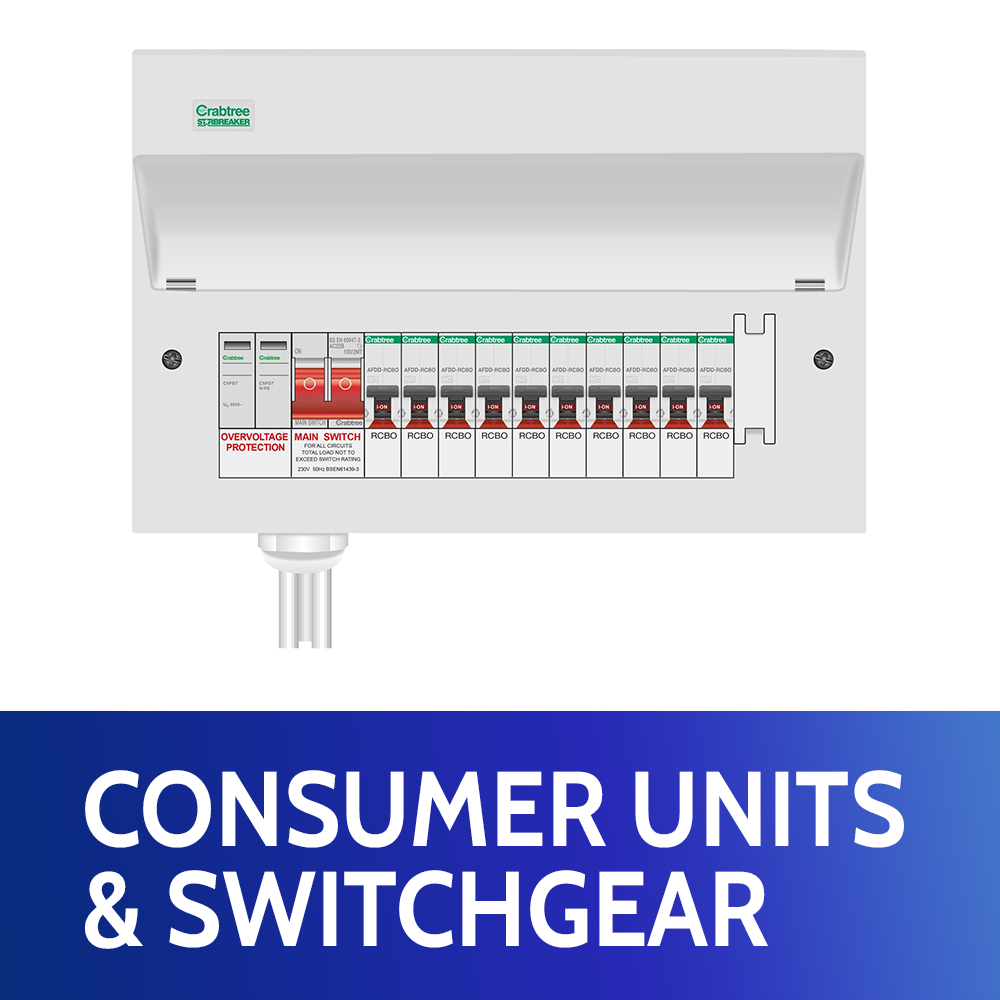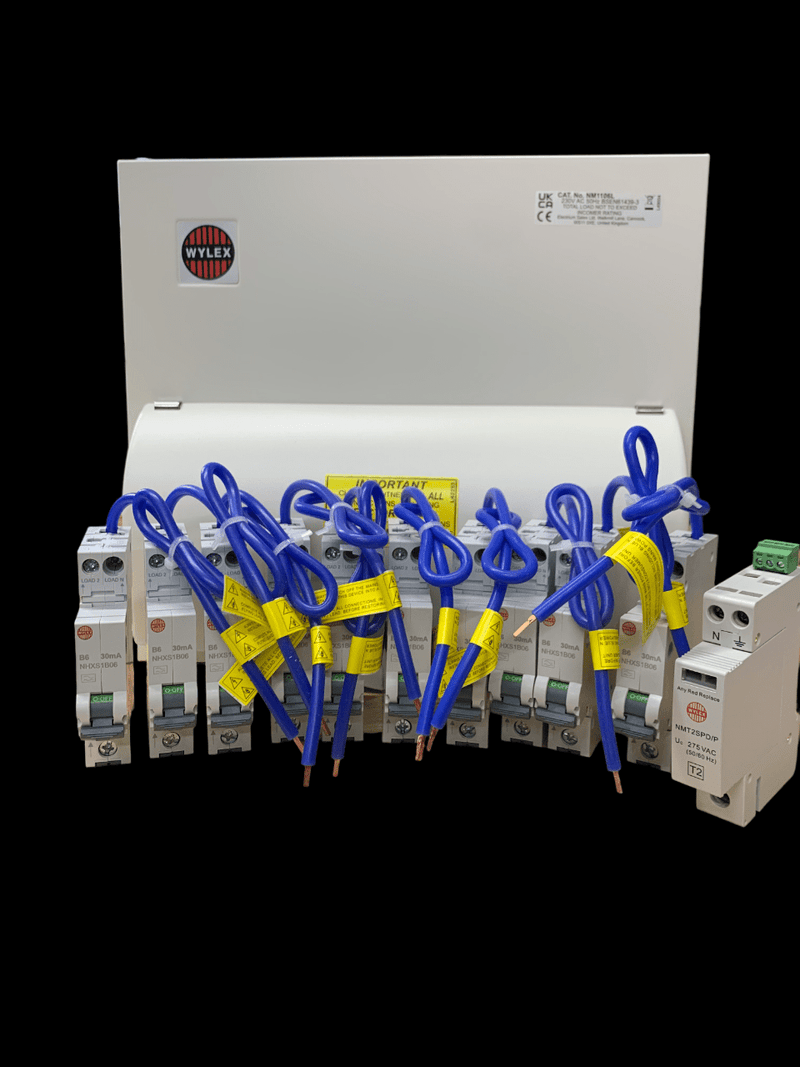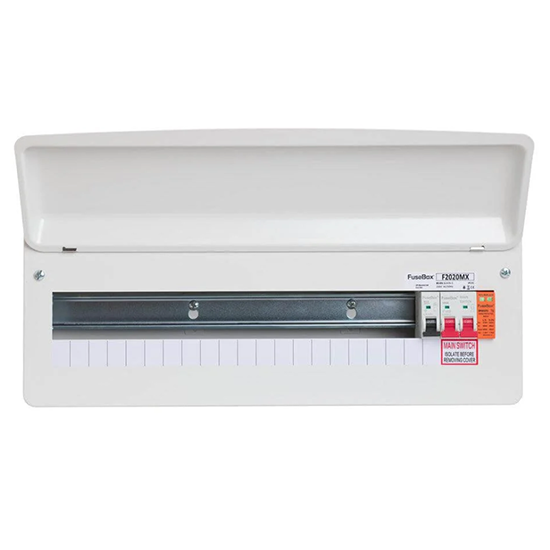A Comprehensive Overview to Preserving Your RCBO CONSUMER UNITS Efficiently
A Comprehensive Overview to Preserving Your RCBO CONSUMER UNITS Efficiently
Blog Article
The Role of Consumer Units in Reliable Power Administration Solution
Customer systems are integral to efficient power monitoring systems, serving as the primary circulation points for electrical power within frameworks. The advent of smart innovations has even more improved their capability, permitting for real-time data surveillance and nuanced energy intake analysis.
Comprehending Consumer Devices

Recognizing the function of customer devices begins with identifying their crucial function in securing electrical systems. By isolating mistakes within particular circuits, customer systems avoid widespread interruptions and potential fire dangers. This seclusion is accomplished with making use of breaker that trip or fuses that impact when a fault is spotted, thus removing the electrical circulation to the affected circuit.
Furthermore, consumer devices promote the well organized distribution of power, enhancing the efficiency of power usage. They permit the methodical monitoring of electrical loads, which can be particularly essential in commercial and commercial settings where need can change dramatically. Effectively conserved customer systems add to the longevity of electric systems and help in lessening downtime caused by electric failings, eventually sustaining the smooth operation of energy-dependent centers.
Smart Technologies Integration

An essential advantage of clever customer units is their ability to utilize progressed formulas and device learning for anticipating analytics. This permits for preemptive changes based upon use patterns, weather prediction, and various other variables, significantly boosting total performance. Clever customer units promote need reaction programs, where power use can be dynamically readjusted during optimal periods to support the grid and minimize expenses.
The assimilation of renewable resource sources, such as solar and wind, is likewise streamlined with clever customer units. By wisely handling the intermittency of these resources, these devices make sure a dependable and balanced power supply. Additionally, wise customer units improve user involvement by supplying in-depth insights and remote control capabilities with mobile applications, fostering a much more positive strategy to energy conservation and sustainability.
Tracking Energy Usage
Building on the capabilities of wise modern technologies combination, keeping an eye on energy usage becomes a critical emphasis within power monitoring systems. Efficient tracking acts as the structure for identifying power inefficiencies and applying restorative procedures. By leveraging advanced metering infrastructure (AMI), real-time data on energy usage can be collected at granular degrees, giving beneficial insights right into intake patterns and peak More hints demand periods. This data-centric technique allows both consumers and power managers to make educated decisions targeted at reducing waste and boosting general effectiveness.
Smart meters and Internet of Points (IoT) gadgets play a crucial function in this monitoring process. These devices can track energy usage in real-time, transmitting information to central systems for analysis. The accumulated data is after that refined through advanced algorithms to find abnormalities, predict future consumption, and recommend optimization strategies. In addition, cloud-based remedies provide scalable platforms for keeping and analyzing big datasets, helping with remote surveillance and control.
The combination of these innovations not only encourages customers with detailed information about their power use yet likewise sustains energy providers in taking care of load distribution extra efficiently. Eventually, accurate and continuous surveillance is vital for accomplishing power performance, cost savings, and sustainability goals within power monitoring systems.
Optimizing Home Appliance Usage

One efficient approach entails recognizing peak and off-peak hours to change energy-intensive tasks, such as washing or dishwashing, to times when power need is lower. This not just reduces strain on the grid yet also takes advantage of lower energy tariffs. In addition, integrating equipment discovering algorithms enables for anticipating maintenance, making sure appliances operate at optimal performance and prolonging their life expectancy.
Power administration systems can also integrate user-specific choices and habits to tailor home appliance usage schedules. For example, clever lights systems can change illumination based upon tenancy and all-natural light accessibility, while heating and cooling systems can keep comfort degrees without excessive energy usage.
Supporting Sustainability
Promoting sustainability within power administration systems entails not only improving efficiency yet likewise promoting environmentally accountable methods. Consumer devices are essential to this process, as they supply real-time data and control systems that enable customers to keep track of and lower their power intake. blog By leveraging advanced modern technologies, consumer units can recognize energy-saving chances and assist in the combination of renewable resource sources like solar and wind power.
One vital facet of promoting sustainability is informing customers on the benefits of accountable energy use. Through in-depth understandings supplied by consumer devices, customers can make informed choices that decrease their carbon impact. These systems can recommend ideal times for running high-energy home appliances based on grid demand and eco-friendly energy accessibility, consequently minimizing reliance on fossil fuels.
Additionally, customer devices sustain the fostering of wise grid modern technologies, which boost the total efficiency and integrity of power distribution. By making it possible for two-way interaction between consumers and utility suppliers, these systems can dynamically get used to energy demands, minimizing waste and promoting the use of sustainable power techniques.
Conclusion
Customer systems, as indispensable elements of energy administration systems, dramatically enhance electric safety and security and effectiveness within structures via circuit protection and smart technology assimilation. In addition, the incorporation of sustainable power resources promotes lasting techniques, contributing to reduced general power intake and lower carbon impacts.
Advancements in smart modern technologies have reinvented the capabilities of energy monitoring systems, specifically via the assimilation of wise customer devices.Structure on the capacities of smart technologies assimilation, keeping an eye on power intake comes to be an important emphasis within power monitoring systems.Reliable device use optimization is a crucial part of power management systems, aiming to enhance efficiency and minimize unneeded power consumption.Customer devices, as important elements of energy monitoring systems, considerably enhance electric safety and effectiveness within structures through circuit security and smart modern technology assimilation. Furthermore, the consolidation of eco-friendly power resources advertises lasting practices, adding to minimized total energy usage and lower carbon impacts.
Report this page